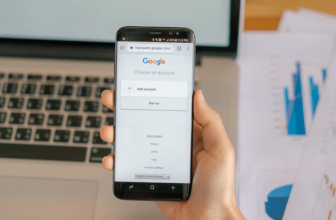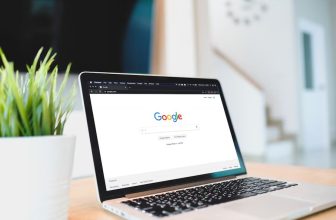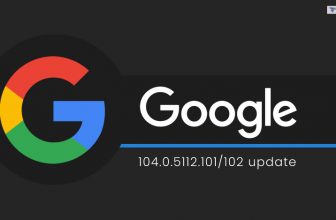
Announced in May 2020 and confirmed in November of the same year, Google’s “Core Web Vitals” project will actually be integrated into the website ranking algorithm in May 2021. The idea: is to make the browsing experience on the indexed sites a full-fledged criterion of the algorithm.
In the world of SEO, the user experience was already considered an important aspect of ranking a site at the top of search results. However, the impact of this criterion remained unofficial and rather linked to indirect effects. It had in fact never been officially recognized by Google.
It is now done and this May 2021 Google Algorithm Update should have a lasting influence on the SEO world. So, here’s what you need to know on the subject to make sure that your UX (user experience) will not weigh down your natural referencing from the month of May…
Summary
- A bit of history: Google’s 3 big algorithm updates
- Florida (2003)
- Panda (2011)
- Penguin (2012)
- The May 2021 Google Page Experience Update
- The traditional criteria of the user experience
- The 3 new criteria of the “Core Web Vitals” project
- What concrete changes when applying the May 2021 Update?
- Frequently Asked Questions
- How was Google’s algorithm updated in May 2021?
- What changes will Google’s May 2021 Algorithm Update bring?
- How can you prepare for the SEO of the future after Google’s May 2021 Algorithm Update?
A bit of history: Google’s 3 big algorithm updates

Over the course of its history, the leader of search engines has regularly reshuffled the natural referencing cards by introducing major updates to its algorithm for ranking sites in search results. Google updates its algorithm in reality several times a day, but from time to time it implements one whose impact is major and considerably varies the positions of certain sites.
In recent years, there have been at least three that have made an impression in the world of Global SEO services:
Florida (2003)
Not always well known, but founding in the matter, this first big update launched the following ones. The message was clear: site owners using strategies to manipulate Google’s algorithm now faced penalties. And the promise was quickly kept, to the great despair of the webmasters concerned.
Panda (2011)
This update targeted an important issue for Google’s strategic development: low-quality content indexed in its search results pages. Google then took the opportunity to publish a list of 23 guidelines to follow to please its algorithm. And, in the process, some sites containing too few texts or duplicated texts were sanctioned.
Penguin (2012)
This time it was a question of sanctioning the use of the most advanced techniques aimed at manipulating the algorithm with regard to net linking: inconsistent anchor distribution, over-optimization, abusive link exchange… As for the two previous updates major days, many sites were penalized. Even today, as a pledge of the lasting impact of these updates, we speak familiarly of sites that have taken a penalty stamped “Panda” or “Penguin”.
The May 2021 Google Page Experience Update
Since Florida, Panda, and Penguin, Google has not implemented such radical updates, but its algorithm continues to benefit regularly from “core updates”, which, if they do not structurally modify the rules of SEO, nevertheless have an impact on site rankings. However, the next big update announced for May 2021 could well be a structural update, as there hasn’t really been one since 2012.
Between the desire to formalize the “Google Page Experience” approach and that of integrating the new criteria of the “Core Web Vitals” project, this update should set the tone for natural referencing in the years to come. But what are these criteria about to be integrated into Google’s ranking algorithm? There are 7 in total: 4 already known and 3 new:
The traditional criteria of the user experience
Among the old user experience indicators that Google is preparing to integrate into its algorithm, we therefore find:
- The “mobile friendly” or “responsive” dimension, refers to the ability of a site’s design to adapt to all screen formats (desktop, tablet, mobile),
- Safe browsing, in other words, the absence of security problems (malware, phishing, dangerous downloads, etc.) suspected by Google’s “Safe Browsing” module,
- The HTTPS protocol, whose encryption theoretically guarantees the confidentiality and integrity of the data sent by the user
- Compliance with instructions concerning intrusive interstitials (pop-ups, banners, and other intrusive devices).
The 3 new criteria of the “Core Web Vitals” project
To the 4 traditional criteria, Google has announced to add 3 new criteria related to its “Core Web Vitals” project:
- The LCP (Largest Concertful Paint), which focuses on the loading time of the main content of the Shopify Seo,
- The FID (First Input Delay), which measures the delay of the user’s first interaction with the page,
- CLS (Cumulative Layout Shift), refers to the visual stability of the page (how often users experience unexpected layout changes).
As you can see, passing the “Google Page Experience” test will therefore imply, from the month of May, meeting certain fairly specific technical requirements. However, until recently, only 15% of sites passed this test … So, what can we concretely expect for the natural referencing of the 85% of sites that do not meet the requirements set by Google?
What concrete changes when applying the May 2021 Update?
Google has so far communicated little about the real impact of its Google Page Experience update. We must therefore admit that we are waiting for it with a certain excitement, especially for poorly prepared sites…
Honestly, given the height of the requirements, it is hard to imagine that the sites which do not reach them could be really penalized by the Google algorithm as of May 2021. On the other hand, it would not be surprising if the sites which validate the test gain places in the search results and therefore exceed poorly optimized sites.
But the change announced recently and which we did not expect, is the establishment of a visual indicator of Page Experience in the results pages on Google. However, the purpose of this indicator is to highlight sites that offer a good user experience, it should have a real impact on the click-through rate (CTR) in the SERPs.
In any case, whether or not this update risks degrading your natural referencing as of May, should be considered an important first step towards the SEO of the future. This SEO, Google has clearly wanted, for several years, to direct it toward the quality of the answers offered by the websites to the requests made by its users. And the user experience of a site is an important aspect of this quality, along with the relevance of its content and the authenticity of its approach.
For now, the main thing to remember from this update is that it is intended to be a turning point in natural referencing practices, a basis for future developments. What we advise you at Ad Premier is to take this turn now rather than wait to be up against the wall… Our SEO experts are there to help you see more clearly on the issue.
Read Also:






